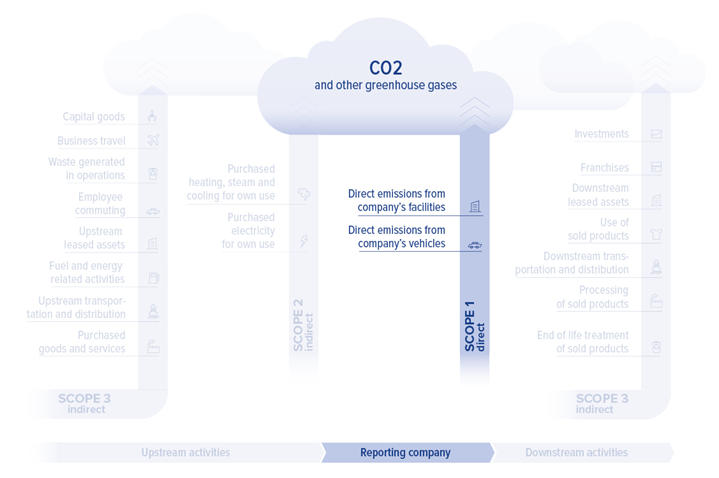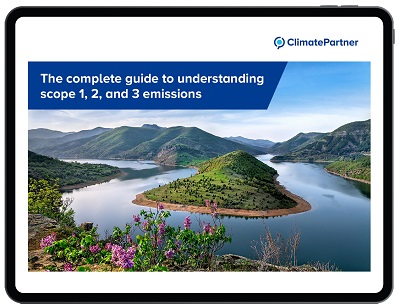Scope 1 emissions
Scope 1 emissions definition
As laid out by the Greenhouse Gas Protocol, scope 1 emissions are a company’s direct greenhouse gas (GHG) emissions. This means the emissions occur from sources that are owned or controlled by the company in question. On the other hand, scope 2 covers indirect emissions like the electricity used by the organisation, and scope 3 covers the emissions of activities up and down the supply chain.
The three scopes are reporting categories that account for a company’s direct, indirect, and value chain emissions. When calculating a corporate carbon footprint, this categorisation gives a comprehensive overview of which emissions should be attributed to a particular company. The scopes also help to ensure that multiple organisations don’t account for the same emissions in the same scope.

Scope 1 refers to an organisation’s direct GHG emissions
Examples of scope 1 emissions
Scope 1 emissions are the result of the direct combustion of fossil fuels by a given company. These emissions can be grouped into four categories, according to the source of the emitted gas.
Stationary combustion refers to emissions from fuels burned in stationary equipment, such as the combustion of oil or gas in a local heating system. Emissions from the combustion of fuel used by the company's own fleet of vehicles then fall under mobile combustion.
Process emissions are caused by physical or chemical process, for example the fumes released during on-site manufacturing and other industrial processes. If the emissions occurred when using the company’s own or directly controlled equipment, then they fall under scope 1.
In addition to emissions from the combustion of fossil fuels, scope 1 also includes fugitive emissions from refrigerants and other gases. Fugitive emissions can be unintentional leaks, but may also be the anticipated gradual release of gas over time, such as from wastewater treatment or cooling towers.
Importantly, scope 1 does not cover emissions from the production of electricity purchased and used by the company. With the exception of energy companies, these are considered indirect emissions and are included under scope 2.
How to reduce scope 1 emissions
As mentioned, scope 1 emissions occur from an organisation’s own activities, or from sources directly under its control. For this reason, scope 1 can be a good starting point for reduction efforts.
The first step in emissions reduction is to calculate your corporate carbon footprint. This establishes a baseline of emissions and allows your company to identify areas for potential reduction. Depending on the organisation, examples might include upgrading the company fleet to electric vehicles or heating office buildings with heat pumps instead of gas.
Visit the ClimatePartner Academy to learn more about climate action.
